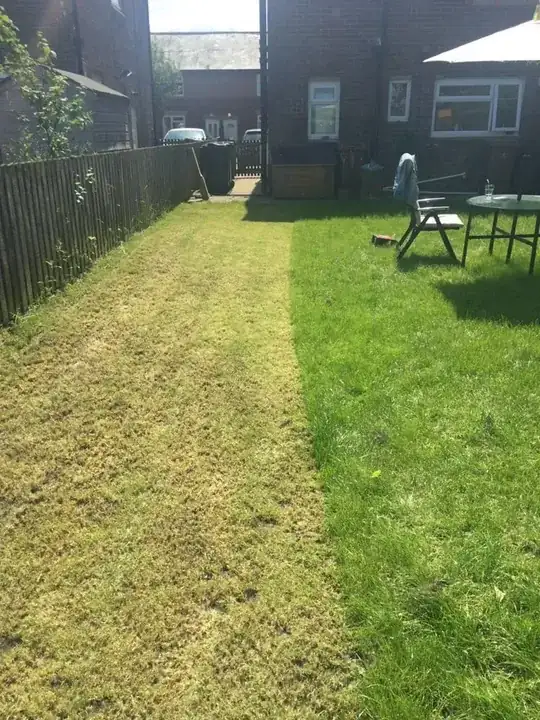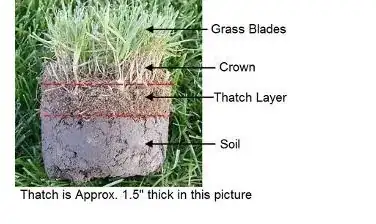When the wife and I bought our house a few years ago, the garden was an over grown mess. We hacked it down to make it presentable short term. When we came to sort it properly last autumn, budgets were tight and we probably didn't do what was best.
We had a handyman use a machine (a verticut?) to rip up the old turf (and seemingly about an inch of the topsoil) that was then skipped. They then went over the dirt with a rotavator to make the garden flatter.
We then had a friend come and sow grass seeds onto the soil. He raked the dirt and pulled up loads of little stones before sowing the seed and fertliser.
This has resulted in some beautiful grass, but I think because of the poor quality of the soil, the grass it pretty patchy and the soil is very hard and quite bumpy.
![Image]: ([ You can see a bit of the patchiness here where it has just been cut. It is worse near the bottom of the garden. I have tried seeding the patches but the ground is so hard any little bit of water just pools and the seeds float off.
You can see a bit of the patchiness here where it has just been cut. It is worse near the bottom of the garden. I have tried seeding the patches but the ground is so hard any little bit of water just pools and the seeds float off.
The grass is really high quality so i'd rather not dig it up and start again if possible.
My plan is to cut the grass a short as possible (2cm?) and then get some half decent topsoil and just rake it on top of the existing grass, gradually building up a decent layer of topsoil that will be easier to sow where its patchy, but also a little softer to be on.
I suppose my question is;
Is putting Topsoil on-top of existing grass a safe and effective way to to level the ground and help combat patchy grass?
Thanks
